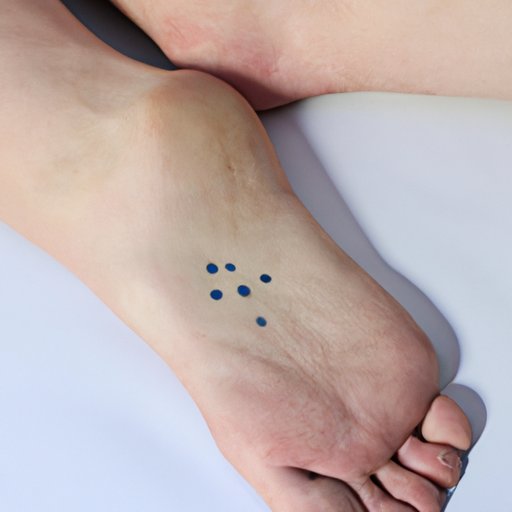Introduction
Bed sores, or pressure sores, are areas of damaged skin caused by prolonged pressure on the skin. These sores are most often found on bony parts of the body such as the heels, hips, and tailbone. They can range from mild redness to open wounds and can cause extreme discomfort and even lead to infections. In this article, we will explore how long it takes to get bed sores, examine the factors that influence their development, review common causes and risk factors, investigate the average timeline for bed sore onset, explore preventative measures to delay bed sore onset, compare different types of bed sores and their timeline, understand treatment options to speed up recovery time, and review tips for caregivers to avoid bed sores.
Analyzing the Factors That Influence the Development of Bed Sores
When it comes to bed sores, there are three primary factors that can influence their development: pressure, moisture, and shear and friction. Pressure points occur when an area of the body is kept in one position for too long, which cuts off circulation and prevents oxygen and nutrients from reaching the skin cells. Moisture can also contribute to bed sores because it keeps skin soft and weakens its resistance to pressure. Finally, shear and friction can cause bed sores when two surfaces rub together, such as when someone slides down a bed or a wheelchair.
Examining Common Causes and Risk Factors for Bed Sores
Prolonged immobility is one of the most common causes of bed sores, especially among people who are bedridden or have limited mobility. Poor nutrition can also increase the risk of developing bed sores because it weakens the skin’s ability to heal itself. Age is another risk factor since elderly people often have thin and fragile skin. Other medical conditions such as diabetes, spinal cord injuries, and stroke can also increase the risk of developing bed sores.

Investigating the Average Time Frame for Bed Sore Development
The amount of time it takes for bed sores to develop depends on a variety of factors, such as the person’s age, overall health, and level of activity. For example, a person who is highly active and has good nutrition may take longer to get bed sores than a person who is bedridden and has poor nutrition. Generally speaking, it can take anywhere from a few hours to several weeks for bed sores to develop.

Exploring Preventative Measures to Delay Bed Sore Onset
The best way to prevent bed sores is to reduce the risk factors associated with them. Changing positions frequently can help relieve pressure points and decrease the chances of developing bed sores. Pressure relief mattresses can also be used to provide additional cushioning and support. Additionally, proper nutrition is essential for maintaining healthy skin and promoting healing.

Comparing Different Types of Bed Sores and Their Timeline
Bed sores are typically categorized into four stages based on their severity. Stage 1 bed sores are considered the mildest and may appear as a patch of discoloration or redness on the skin. Stage 2 bed sores are more severe and may involve broken skin or blisters. Stages 3 and 4 bed sores are the most severe and involve deep ulcers or open wounds. The amount of time it takes for bed sores to progress from one stage to the next varies depending on the person’s overall health and other factors.

Understanding Treatment Options to Speed Up Recovery Time
Treatment for bed sores typically involves keeping the affected area clean and dry and applying medicated dressings to promote healing. In some cases, medications such as antibiotics may be prescribed to treat infections. Surgery may also be necessary to remove dead tissue or repair damaged skin. In severe cases, skin grafts may be used to cover large areas of damaged skin.
Reviewing Tips for Caregivers to Avoid Bed Sores
Caregivers should regularly monitor the skin of those they care for and look for signs of bed sores. It is also important to change positions regularly and use pressure relief mattresses to help reduce pressure points. Proper nutrition is also essential for maintaining healthy skin and promoting healing. Finally, any areas of redness or irritation should be examined by a doctor to determine if they are bed sores.
Conclusion
Bed sores can be painful and difficult to treat, so it is important to take steps to prevent them. Knowing the factors that influence bed sore development, common causes and risk factors, and average timeline for bed sore onset can help caregivers take appropriate measures to avoid them. Treatments are available to speed up recovery time and improve comfort, but prevention is always the best option. With the right preventative measures and early detection, bed sores can be avoided.


